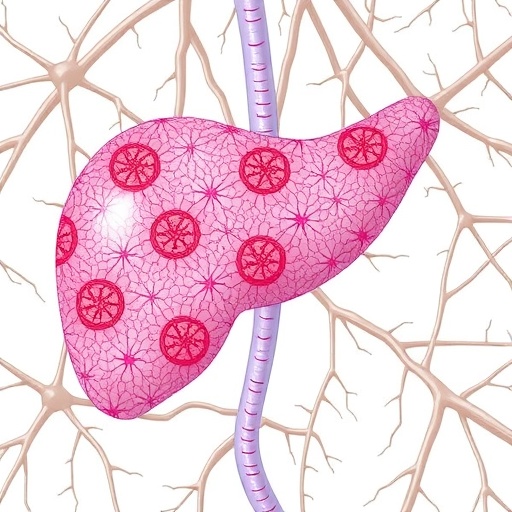In a groundbreaking study published in Nature Communications, researchers have unveiled new genetic mechanisms that deepen our understanding of osteoarthritis (OA), a debilitating joint disease affecting millions worldwide. By focusing on primary human chondrocytes—the specialized cells responsible for maintaining cartilage—this investigation sheds light on the intricate relationship between gene regulation and the risk of developing osteoarthritis. The team, led by Byun, Shine, and Coryell, employed advanced genomic techniques to identify response splicing quantitative trait loci (rsQTLs), which serve as critical modulators of gene expression in the context of inflammation and cartilage degradation.
Osteoarthritis is characterized by the progressive breakdown of joint cartilage, leading to pain, stiffness, and reduced mobility. While risk factors such as age, obesity, and joint injury are well documented, the precise genetic underpinnings remain partially elusive. This study pioneers a focus on splicing variants—alternative arrangements of RNA transcripts that diversify protein products—within osteoarthritic chondrocytes after exposure to pro-inflammatory stimuli. By pinpointing these response elements, the research provides a new angle to examine genetic risk beyond traditional analyses limited to steady-state gene expression.
Central to the investigation was the identification of splicing quantitative trait loci that are responsive to inflammatory signals, such as those mediated by interleukin-1 beta (IL-1β). IL-1β is a prominent cytokine implicated in cartilage inflammation and degeneration. By treating chondrocytes with IL-1β and sequencing their transcriptomes, the researchers captured dynamic changes in splicing events influenced by underlying genetic variations. This approach enabled them to map how specific genetic variants modulate alternative splicing in a disease-relevant environment, capturing mechanisms that static analyses may overlook.
The methodology involved generating comprehensive RNA-sequencing profiles from human chondrocytes obtained from donors with varying genetic backgrounds. High-depth sequencing allowed for the detection of subtle yet meaningful shifts in splicing patterns in response to inflammatory challenges. Crucially, integrating genotype data with these dynamic splicing changes gave rise to the discovery of response splicing QTLs, a novel class of genetic modulators that act specifically when cells encounter inflammatory cues.
Among the highlights of the study was the identification of several candidate genes harboring rsQTLs that correspond to loci previously associated with osteoarthritis susceptibility in genome-wide association studies (GWAS). These genes include notable players in cartilage homeostasis, extracellular matrix remodeling, and inflammatory pathways. The finding suggests that altered splicing patterns regulated by genetic variation could be a key mechanism influencing individual risk of OA, offering a functional link between GWAS loci and disease biology.
Another pivotal insight derived from this research is the tissue- and stimulus-specific nature of these rsQTLs. While traditional expression QTLs (eQTLs) often represent baseline regulatory effects, response splicing QTLs reveal conditional regulation that emerges only under certain physiological stresses, such as inflammation. This nuanced understanding emphasizes the complexity of gene regulation in disease states and highlights the importance of examining molecular phenotypes beyond steady conditions.
The research also underscores the utility of integrating multi-omics data on human primary cells, rather than relying solely on cell lines or bulk tissue analyses. By focusing on primary chondrocytes, the authors ensured that their findings are directly relevant to the cell type central to OA pathophysiology. This approach enhances the translational potential of the discoveries, paving the way for precision medicine strategies tailored to patients’ genetic profiles.
Importantly, the study contributes to a growing appreciation that genetic variants exert effects on multiple molecular layers, from transcription to RNA processing and beyond. The link between genotype and phenotype is thus multifaceted, involving not just gene expression levels but also the diversity of protein isoforms produced. Response splicing QTLs emerge as critical intermediaries in this complex genetic architecture, particularly in diseases with an inflammatory component like osteoarthritis.
The implications of these findings reach far beyond OA research. By demonstrating the power of context-specific splicing QTL mapping in primary cells under disease-relevant stimuli, the study establishes a framework applicable to other complex diseases where cellular responses to environmental factors shape pathology. This paradigm shift encourages the scientific community to interrogate gene regulation dynamically rather than statically, unlocking genetic insights that were previously hidden.
In practical terms, the mapped rsQTLs may inform biomarker development for osteoarthritis, enhancing early diagnosis or prognostic predictions based on individuals’ genetic and molecular response patterns. Such biomarkers could aid clinicians in stratifying patient risk and optimizing intervention timing before irreversible cartilage damage occurs, ultimately improving patient outcomes and reducing healthcare costs.
Furthermore, the integration of these molecular insights into drug discovery pipelines holds promise for identifying novel compounds that specifically modulate harmful splicing events or inflammatory responses in chondrocytes. By linking genetic risk loci to mechanistic outcomes, the study fosters a precision therapeutics approach that can circumvent the limitations of current symptomatic treatments for OA, which often focus on pain management rather than disease modification.
The technological advances that underpinned this research are worth noting. The combination of high-throughput RNA sequencing, sophisticated statistical genetics methodologies to detect rsQTLs, and careful experimental design using human primary cells illustrates the interdisciplinary nature of modern biomedical research. Such collaborations across genomics, bioinformatics, and clinical sciences are essential to unraveling the complexity of multifactorial diseases like osteoarthritis.
Looking forward, the findings stimulate exciting questions about how response splicing QTLs interact with other layers of gene regulation, including epigenetics, transcription factor binding, and post-translational modifications. Integrating these dimensions will provide an even richer understanding of OA pathogenesis and potentially reveal novel intervention points previously unconsidered.
In conclusion, Byun and colleagues have charted new territory in osteoarthritis genetics by revealing how inflammation-responsive splicing variants contribute to disease risk at the cellular level. This study represents a major step towards decoding the genetic intricacies of cartilage degeneration and paves the way for novel therapeutic strategies tailored to individuals’ unique regulatory landscapes. As osteoarthritis continues to impose a significant global burden, such cutting-edge research offers hope for more effective and personalized management of this common joint disorder.
Subject of Research: Genetic regulation of alternative splicing in primary human chondrocytes under inflammatory conditions and its association with osteoarthritis risk.
Article Title: Response splicing quantitative trait loci in primary human chondrocytes identify putative osteoarthritis risk genes.
Article References:
Byun, S., Shine, J., Coryell, P. et al. Response splicing quantitative trait loci in primary human chondrocytes identify putative osteoarthritis risk genes. Nat Commun 16, 7932 (2025). https://doi.org/10.1038/s41467-025-63299-0
Image Credits: AI Generated
Tags: advanced genomic techniques in medicinealternative splicing in chondrocytescartilage degradation mechanismschondrocyte gene regulationgenetic risk assessment for osteoarthritisinflammatory response in osteoarthritisinterleukin-1 beta signalingNature Communications study on OAOsteoarthritis genetic researchrisk factors for joint diseaseRNA transcript variants in OAsplicing quantitative trait loci





